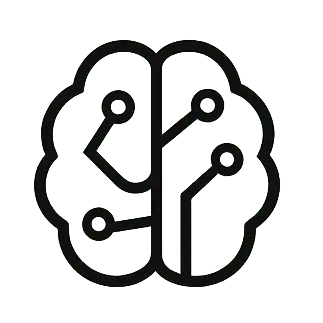TLDR: A new research paper introduces a geometry-aware initialization method for sigmoidal Multi-Layer Perceptrons (MLPs). By combining insights from the Universal Approximation Theorem and tropical geometry, the method allows MLPs to start with decision boundaries that are already aligned with target shapes. This reduces the need for extensive training to discover geometry, enabling more interpretable and shape-driven network design, as demonstrated in numerical studies on various planar classification tasks.
A recent research paper titled “From Universal Approximation Theorem to Tropical Geometry of Multi-Layer Perceptrons” by Yi-Shan Chu and Yueh-Cheng Kuo explores a novel approach to initializing Multi-Layer Perceptrons (MLPs), particularly those utilizing sigmoidal activation functions. This work establishes a significant connection between the foundational Universal Approximation Theorem (UAT) and the more combinatorial perspective of tropical geometry in neural networks.
The Universal Approximation Theorem is a cornerstone in the theoretical understanding of neural networks. It essentially states that a neural network with at least one hidden layer can approximate any continuous function to an arbitrary degree of accuracy. While this theorem guarantees the existence of such networks, it doesn’t provide a blueprint for how to construct them or how to set their initial parameters to achieve a specific function or decision boundary. This often means that neural networks rely heavily on extensive training processes to ‘discover’ the underlying geometric patterns in data.
In contrast, tropical geometry offers a different lens, especially for Rectified Linear Unit (ReLU) networks. It describes the decision functions of ReLU networks as piecewise-linear structures, often referred to as ‘tropical rationals.’ This perspective can provide explicit methods for ‘programming’ decision boundaries, but its application has traditionally been limited to ReLU-based networks, which are characterized by their sharp, non-smooth transitions.
The core contribution of this research is to bridge these two distinct viewpoints. The authors introduce a constructive, geometry-aware initialization method specifically for *sigmoidal* MLPs. Unlike ReLU networks, sigmoidal networks use smooth, S-shaped activation functions. The proposed method designs these purely sigmoidal networks to adhere to the classical finite-sum format of UAT, effectively ‘compiling’ a geometric understanding of a target region directly into the network’s initial weights.
Consider a simple example: planar binary classification, where the goal is to determine if a point belongs to a specific region in a 2D space. The paper demonstrates how to approximate a convex target region using a series of supporting half-spaces. Each half-space is then associated with a ‘steep sigmoid gate.’ These gates function by smoothly transitioning from a value of 0 to 1, effectively ‘counting’ how many geometric constraints a given point satisfies. By summing the outputs of these gates and applying a threshold, the network can define a decision boundary that closely matches the desired shape *at the very beginning*, without any training.
The methodology is further extended to handle more complex scenarios, including finite unions of convex sets and even arbitrary non-convex planar regions. For intricate non-convex shapes, the authors employ a ‘ball cover’ approach, where the complex shape is approximated by a union of numerous small disks. Each disk is then approximated by a polygon, and the same sigmoid gate mechanism is applied. This sophisticated process results in a two-layer sigmoidal MLP capable of representing highly intricate shapes.
A significant implication of this research is that MLPs can now start with decision boundaries that are already geometrically aligned with the task. This dramatically reduces the reliance on the training process, which then primarily serves to refine the network’s calibration rather than to discover the fundamental shape of the boundary. This approach stands in contrast to conventional initialization methods (such as random, Xavier, Kaiming, or He initializations), which typically begin with a generic, uninformative boundary and require extensive optimization to learn the target geometry.
The authors validate their approach through numerical studies on various planar regions, including single disks, unions of two disks, and a non-convex ‘swiss-roll’ dataset. Their geometry-aware initialization consistently achieves high performance metrics, such as Area Under the Curve (AUC) and Intersection-over-Union (IoU), right from the initialization phase. This performance often surpasses that of traditional initialization methods at the outset. While all methods tend to converge to high performance after training, the constructive approach highlights a crucial inductive bias for purely sigmoidal MLPs.
Also Read:
- Unveiling Hidden Patterns in Directed Percolation with Deep Learning
- Optimizing Large Language Model Training: A New Approach to Hyperparameter Scaling
This work offers a practical and insightful bridge between the classical theoretical guarantees of the Universal Approximation Theorem and the explicit boundary programming capabilities derived from tropical geometry. It paves the way for more interpretable and shape-driven initialization strategies for smooth MLPs, without the need to resort to ReLU architectures. For a deeper dive into the methodology and results, the full research paper can be accessed here.


